Activation and regulation of the granulation tissue derived cells with stemness-related properties
- PMID: 25925316
- PMCID: PMC4446126
- DOI: 10.1186/s13287-015-0070-9
Activation and regulation of the granulation tissue derived cells with stemness-related properties
Abstract
Introduction: Skin as the largest and easily accessible organ of the body represents an abundant source of adult stem cells. Among them, dermal stem cells hold great promise in tissue repair and the skin granulation tissue has been recently proposed as a promising source of dermal stem cells, but their biological characteristics have not been well investigated.
Methods: The 5-bromo-2'-deoxyuridine (BrdU) lineage tracing approach was employed to chase dermal stem cells in vivo. Granulation tissue derived cells (GTCs) were isolated and their in vitro proliferation, self-renewing, migration, and multi-differentiation capabilities were assessed. Combined radiation and skin wound model was used to investigate the therapeutic effects of GTCs. MicroRNA-21 (miR-21) antagomir was used to antagonize miR-21 expression. Reactive oxygen species (ROS) were scavenged by N-acetyl cysteine (NAC).
Results: The quiescent dermal stem/progenitor cells were activated to proliferate upon injury and enriched in granulation tissues. GTCs exhibited enhanced proliferation, colony formation and multi-differentiation capacities. Topical transplantation of GTCs into the combined radiation and skin wound mice accelerated wound healing and reduced tissue fibrosis. Blockade of the miR-21 expression in GTCs inhibited cell migration and differentiation, but promoted cell proliferation and self-renewing at least partially via a ROS dependent pathway.
Conclusions: The granulation tissue may represent an alternative adult stem cell source in tissue replacement therapy and miR-21 mediated ROS generation negatively regulates the stemness-related properties of granulation tissue derived cells.
Figures
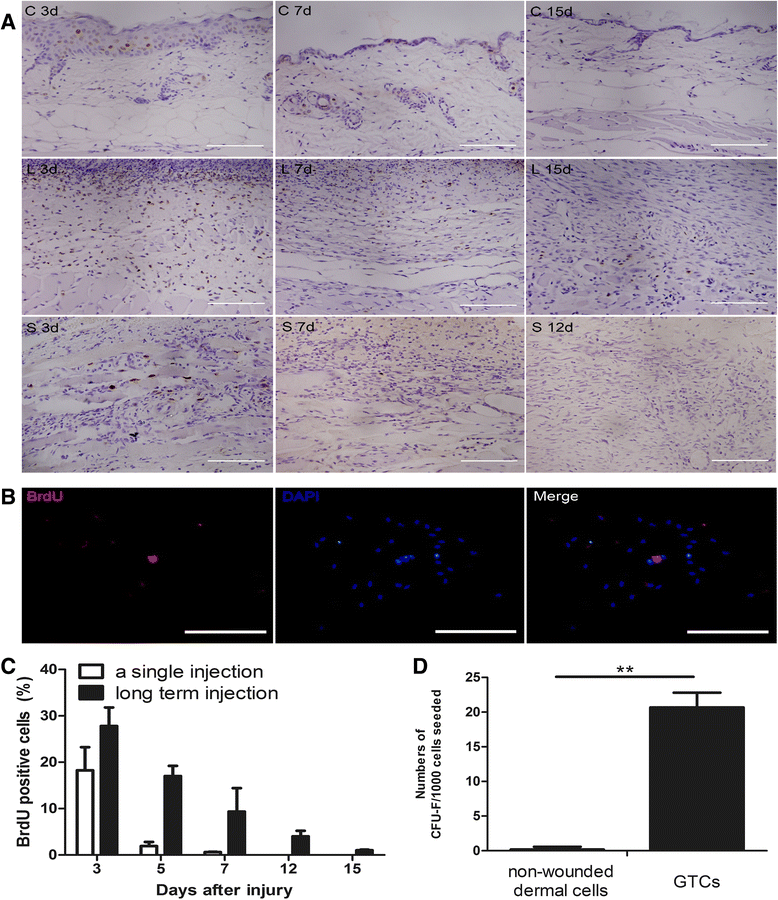
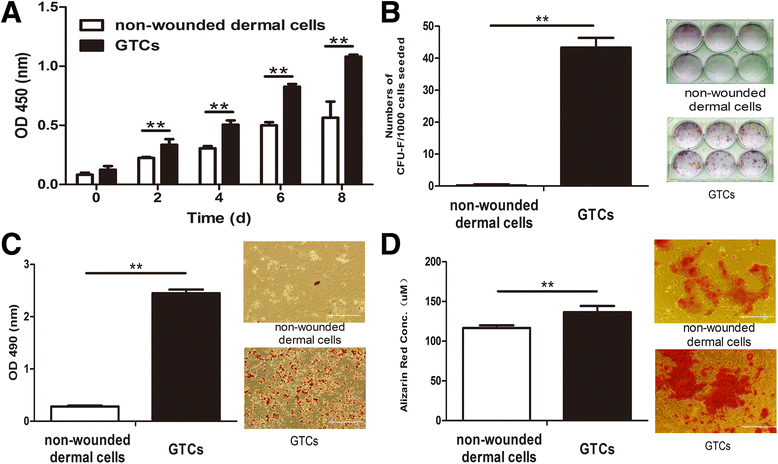
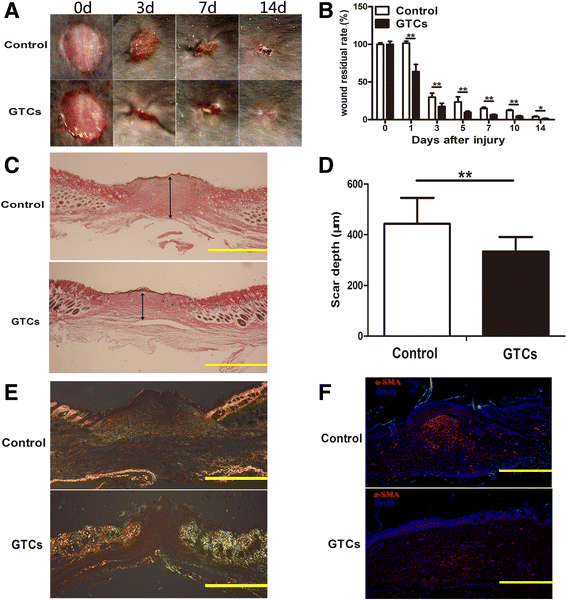
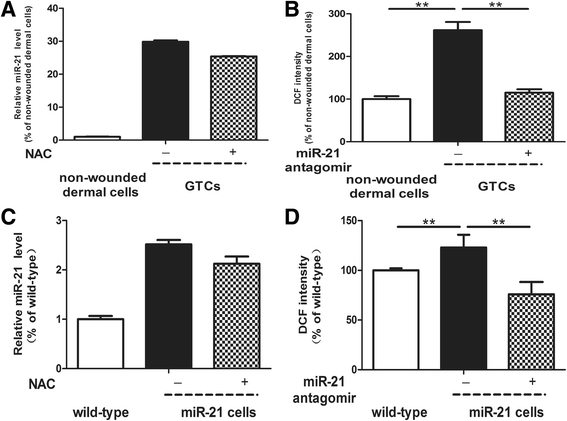


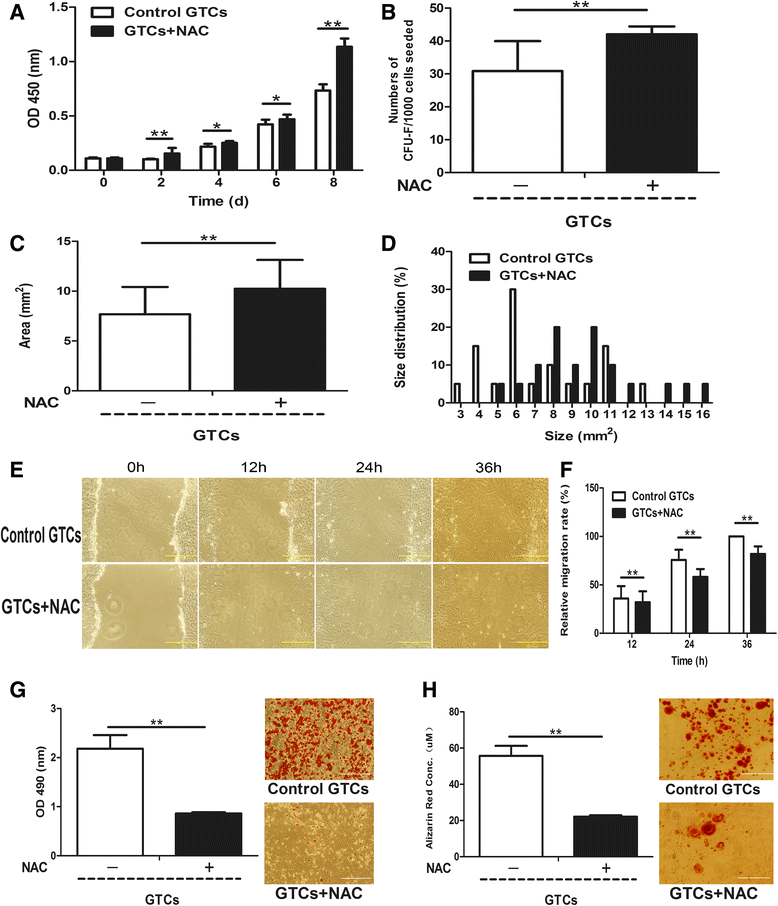
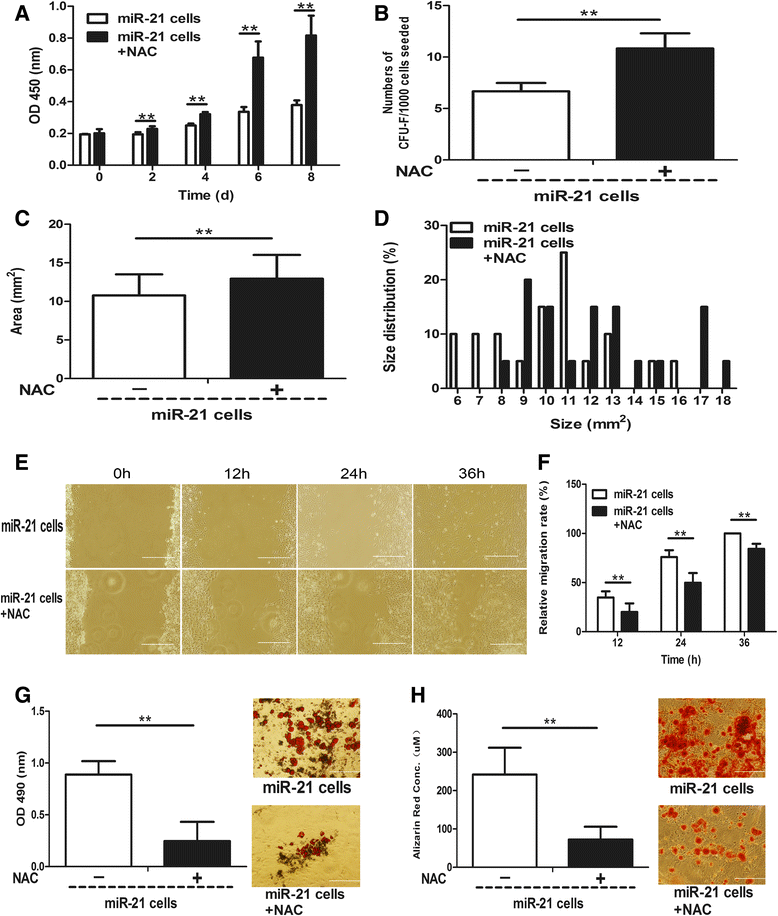
Similar articles
-
Radioresistance of granulation tissue-derived cells from skin wounds combined with total body irradiation.Mol Med Rep. 2016 Apr;13(4):3377-83. doi: 10.3892/mmr.2016.4939. Epub 2016 Feb 23. Mol Med Rep. 2016. PMID: 26936439
-
Hopes and Limits of Adipose-Derived Stem Cells (ADSCs) and Mesenchymal Stem Cells (MSCs) in Wound Healing.Int J Mol Sci. 2020 Feb 14;21(4):1306. doi: 10.3390/ijms21041306. Int J Mol Sci. 2020. PMID: 32075181 Free PMC article. Review.
-
A Novel Composite Biomaterial Made of Jellyfish and Porcine Collagens Accelerates Dermal Wound Healing by Enhancing Reepithelization and Granulation Tissue Formation in Mice.Adv Wound Care (New Rochelle). 2020 Jun;9(6):295-311. doi: 10.1089/wound.2019.1014. Epub 2019 Oct 2. Adv Wound Care (New Rochelle). 2020. PMID: 32286206 Free PMC article.
-
Regulation of impaired angiogenesis in diabetic dermal wound healing by microRNA-26a.J Mol Cell Cardiol. 2016 Feb;91:151-9. doi: 10.1016/j.yjmcc.2016.01.007. Epub 2016 Jan 9. J Mol Cell Cardiol. 2016. PMID: 26776318 Free PMC article.
-
Therapeutic Implications of Newly Identified Stem Cell Populations From the Skin Dermis.Cell Transplant. 2015;24(8):1405-22. doi: 10.3727/096368914X682431. Epub 2014 Jun 26. Cell Transplant. 2015. PMID: 24972091 Review.
Cited by
-
The 1470 nm diode laser with an intralesional fiber device: a proposed solution for the treatment of inflamed and infected keloids.Burns Trauma. 2019 Feb 15;7:5. doi: 10.1186/s41038-019-0143-6. eCollection 2019. Burns Trauma. 2019. PMID: 30783604 Free PMC article.
-
ID1/ID3 mediate the contribution of skin fibroblasts to local nerve regeneration through Itga6 in wound repair.Stem Cells Transl Med. 2021 Dec;10(12):1637-1649. doi: 10.1002/sctm.21-0093. Epub 2021 Sep 14. Stem Cells Transl Med. 2021. PMID: 34520124 Free PMC article.
-
MicroRNA-21 preserves the fibrotic mechanical memory of mesenchymal stem cells.Nat Mater. 2017 Mar;16(3):379-389. doi: 10.1038/nmat4780. Epub 2016 Oct 31. Nat Mater. 2017. PMID: 27798620
-
Increase in the radioresistance of normal skin fibroblasts but not tumor cells by mechanical injury.Cell Death Dis. 2017 Feb 2;8(2):e2573. doi: 10.1038/cddis.2016.416. Cell Death Dis. 2017. PMID: 28151479 Free PMC article.
-
Fibrogenic fibroblast-selective near-infrared phototherapy to control scarring.Theranostics. 2019 Sep 19;9(23):6797-6808. doi: 10.7150/thno.36375. eCollection 2019. Theranostics. 2019. PMID: 31660069 Free PMC article.
References
-
- Uzarska M, Porowinska D, Bajek A, Drewa T. Epidermal stem cells – biology and potential applications in regenerative medicine. Postepy Biochem. 2013;59:219–27. - PubMed
Publication types
MeSH terms
Substances
LinkOut - more resources
Full Text Sources
Other Literature Sources
Medical

